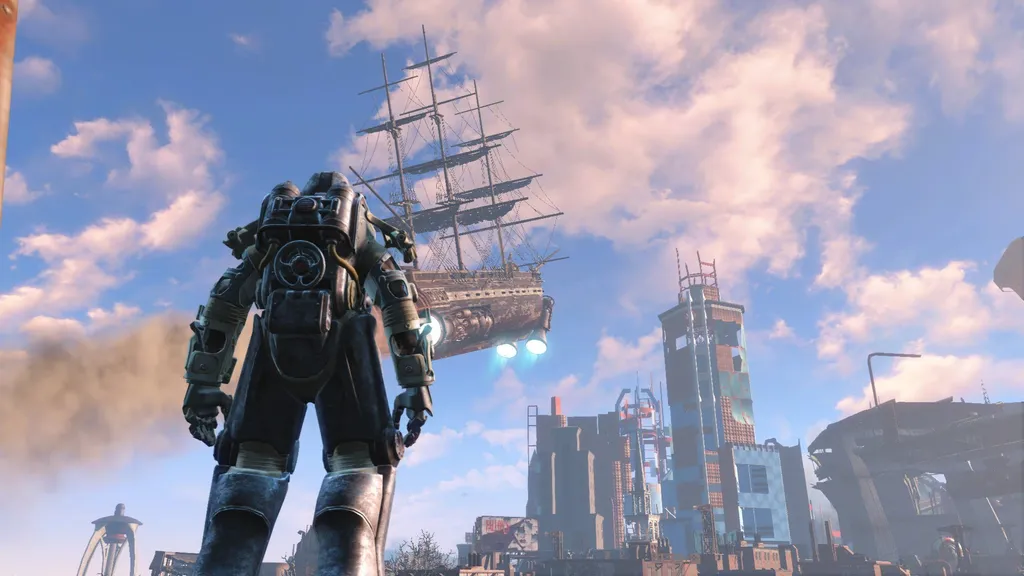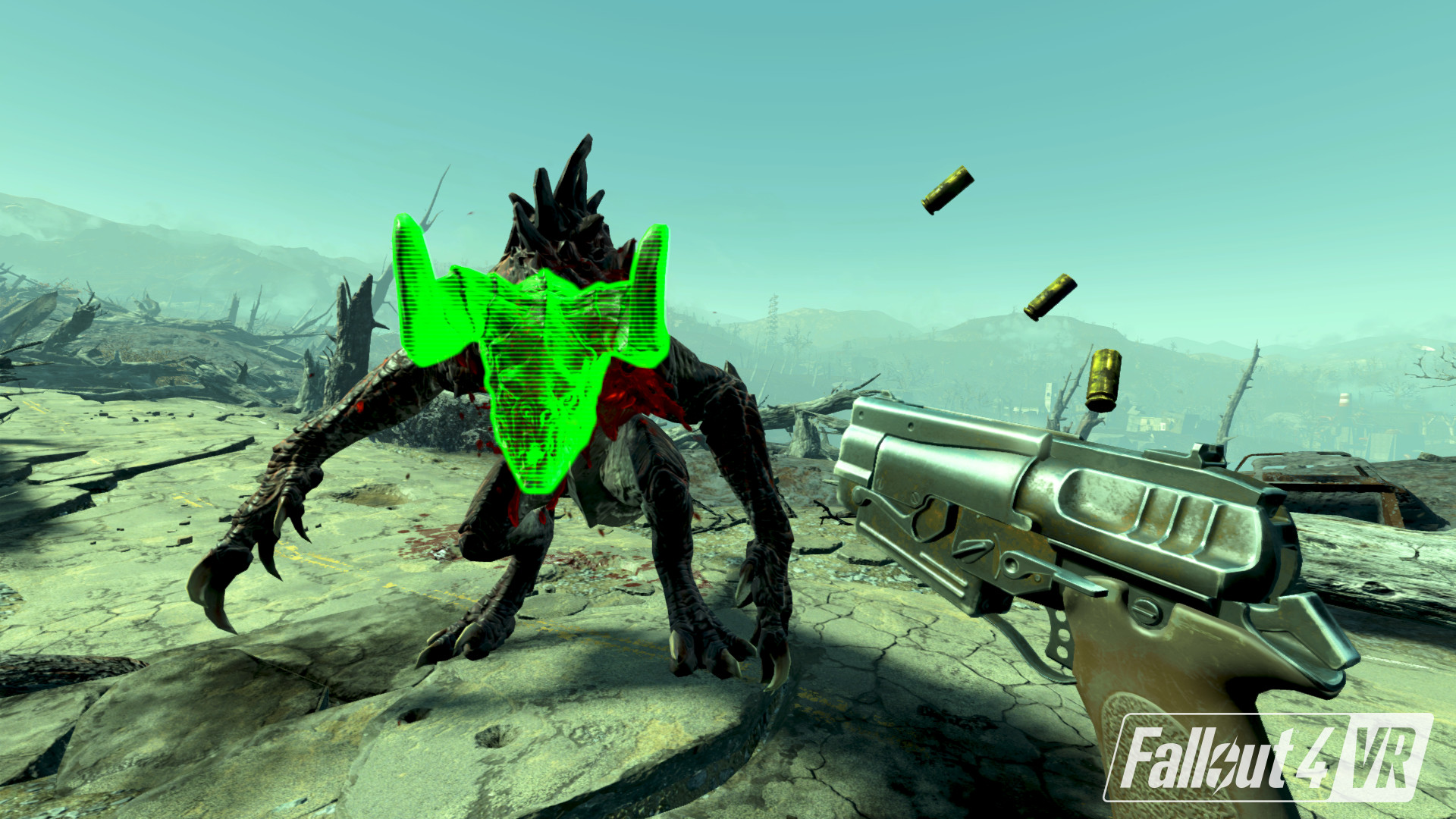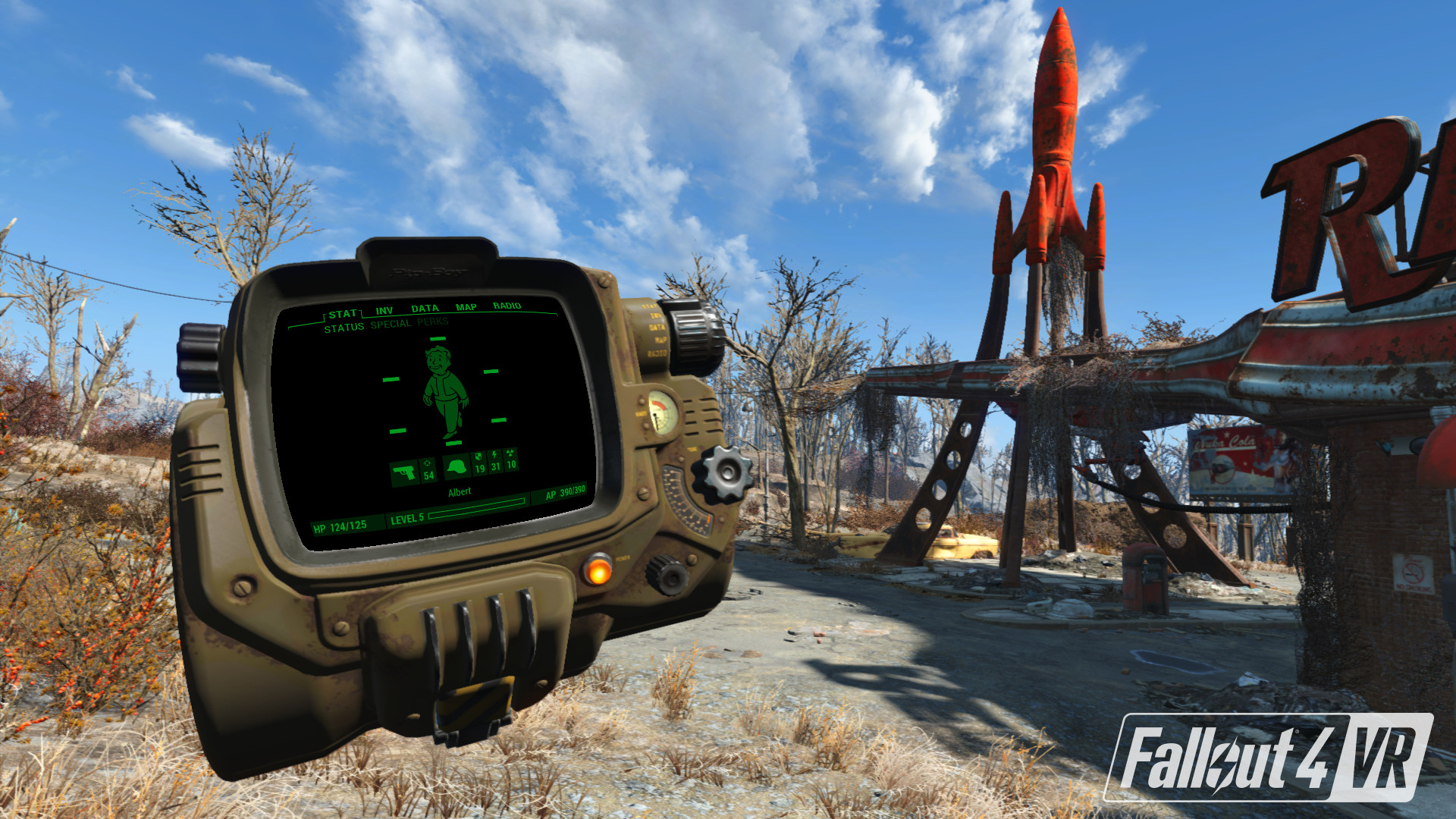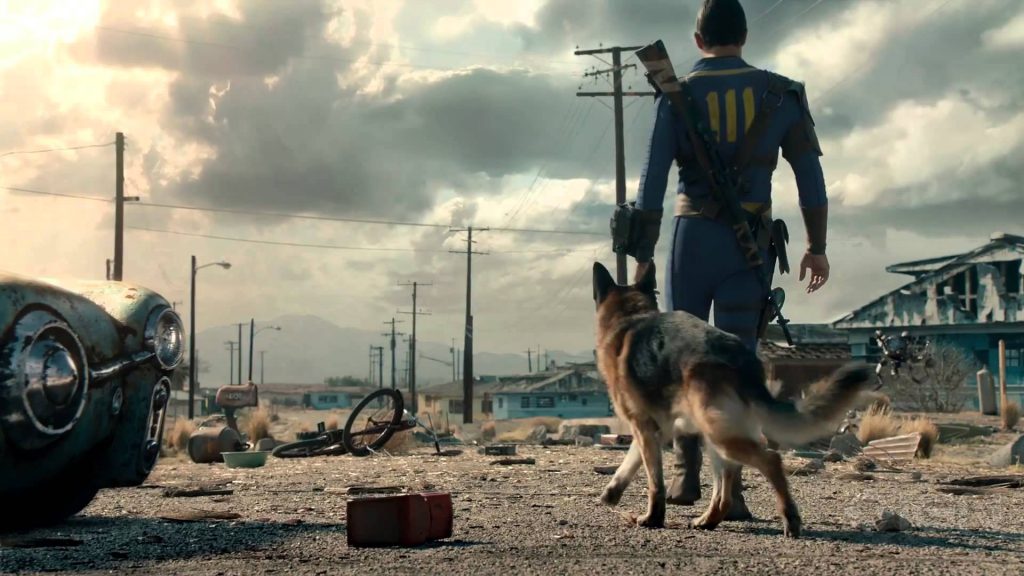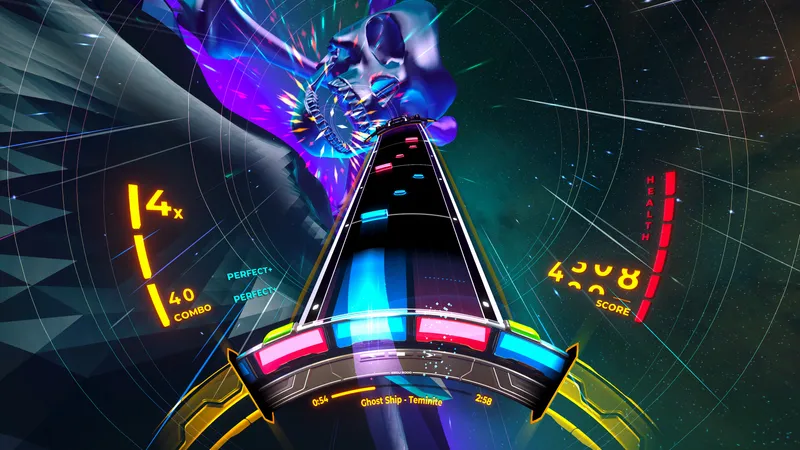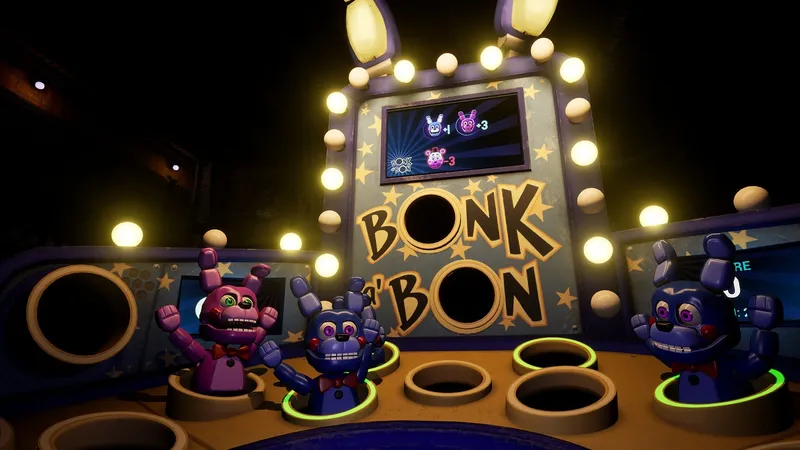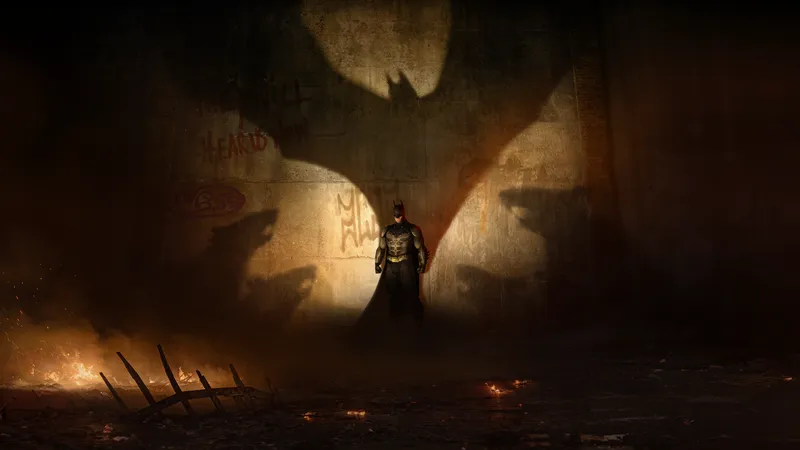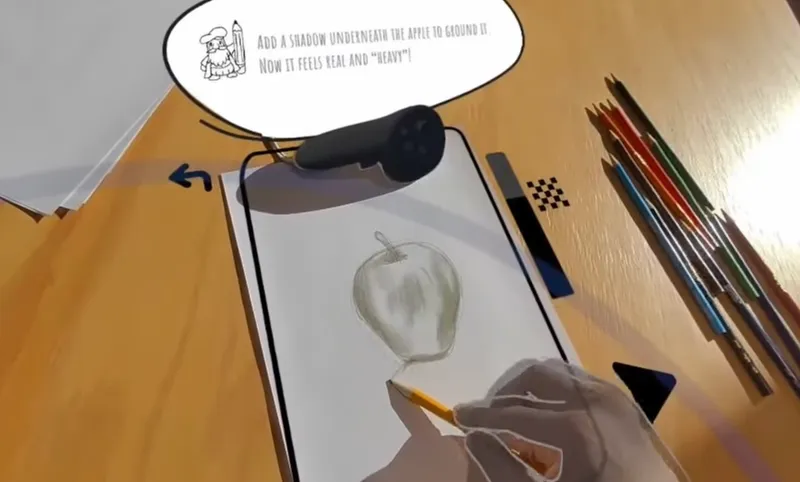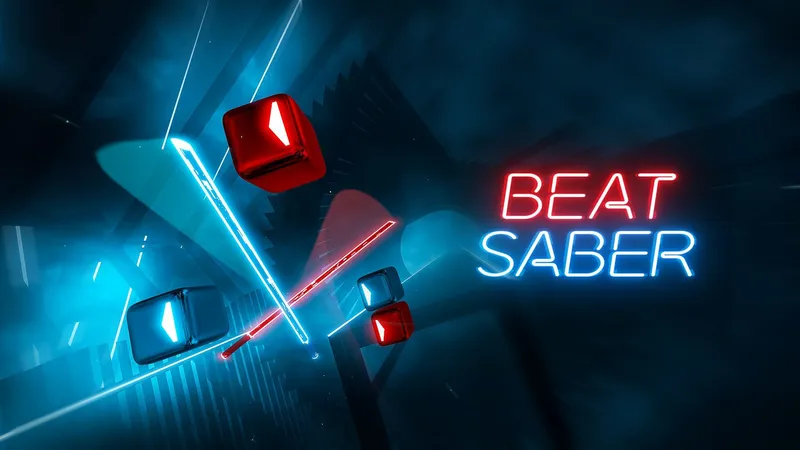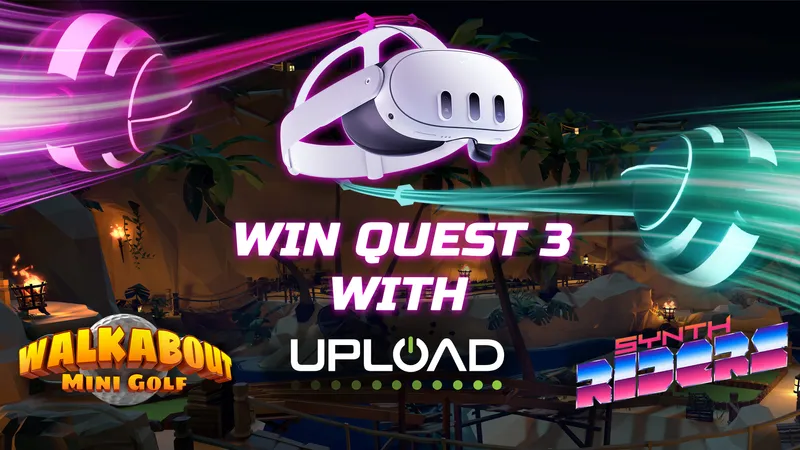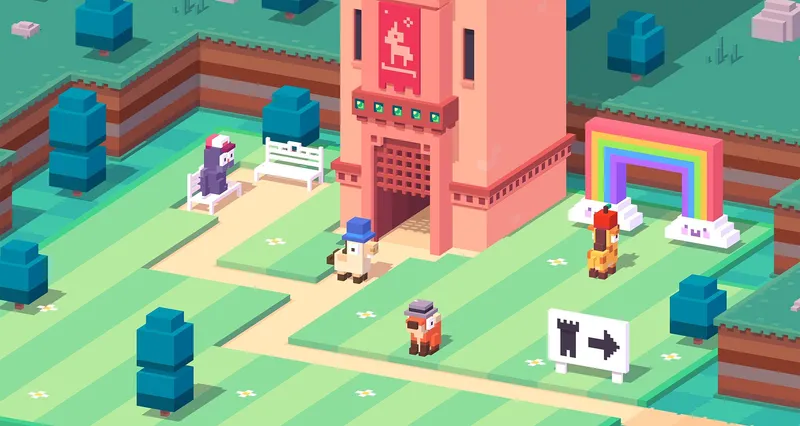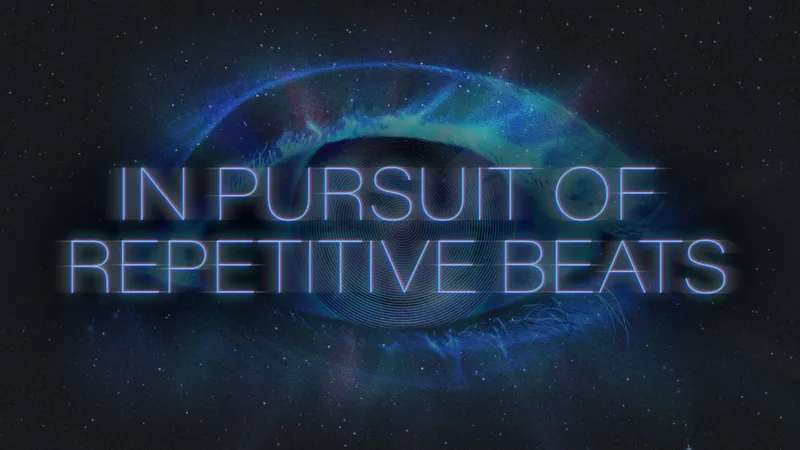Fallout 4 VR’s release date (December 12th on HTC Vive) is fast approaching. We first got our hands-on the game all the way back at E3 2016 when it was first announced, played it again at E3 2017, then again at QuakeCon, and in September we tried it once more at the Virtual Reality Developers Conference (VRDC). The downside is that all of these sessions (except the now-ancient 2016 demo) have all been with the same dated build. The version I played most recently is the same one that was on display three months ago, so the game that actually releases this month should be a good deal more polished than what we’ve seen thus far. So let me restate that: I’ve been told the build I played is very dated and the final game will be a lot more polished. That is, it really needs to be more polished if it wants any chance of success.
People that play Bethesda games are used to bugs. It’s a long-running joke that their games are so large, so ambitious, and so detailed that it’s impossible for them to weed out every bug in the development process. The Elder Scrolls IV: Oblivion, Fallout 3, The Elder Scrolls V: Skyrim, and Fallout 4 are all prime examples. As a result, ideally, the team has done a lot of work to make sure the port of Fallout 4 to VR runs well and is as bug-free as possible.
From what I’ve seen it’s totally possible and fans of detailed, massive, immersive RPGs should absolutely still be excited.
In my demo everything started out at the iconic Red Rocket station between Sanctuary and Concord. After a minute of me getting my bearings, figuring out the controls again, and getting acquainted with the world, that’s when combat started. Feral ghouls and a traveling band of mercenaries made their way over the hill and descended upon me. Using the right trackpad I could bring up a weapon wheel to switch weapons, or look down at my left wrist to search through my Pip Boy-powered inventory in real-time.
When you play the non-VR version of the game bringing up the Pip Boy interface freezes the game and sucks up your entire screen space, but in VR it feels like just another part of the world and the rest of the game keeps moving around you. I’d love to see players actually fashion their Vive controllers into wearable Pip Boys in the image of the wondrous Collector’s Edition that released back for the game’s launch.
After I looked at my left wrist I could explore the entire interface of the Pip Boy using the left trackpad. It felt a bit awkward at first because I wasn’t used to that in a Fallout game, but quickly it started to make sense. The biggest barrier to mass adoption of a game like this is really going to be the controls.
Looting corpses is done by looking and pointing with the right controller and then navigating a floating menu with the trackpad. If you move away then the loot menu disappears. The same goes for the Pip Boy: look away or move your arm away, then you’re no longer using the Pip Boy. Everything is contextual, but even the act of switching weapons with the trackpad felt a bit stiff at first.
Notably, combat felt a lot more intense in VR than it does when playing the non-VR version. Generally speaking everything is more visceral from the confines of a VR headset, but now being able to do a side-by-side comparison of the same game really makes that more clear. Although, interestingly, despite the increased intensity I also felt more powerful. Bethesda seemed to have ramped up the number of enemies I faced at any given time and made it so I couldn’t die and provided me with oodles of ammunition, so I was a walking death machine.
Pressing the top button above the right trackpad turned on V.A.T.S. which works entirely differently in VR. In the base game time would slow down and you selected body parts to target with various percentage chances and critical probabilities. In VR you activate it to dramatically slow down time again, but now you have to manually target your gun and hope your aim is true. The result feels less like you’re Robocop and more like you’re in The Matrix.
Going back to the point about polish though, that’s my main concern. They added left trackpad locomotion so you can freely move around the environment, but anyone that’s ever used a Vive can testify to the fact that using the trackpads for movement is wonky at best.
At the top of my list of glaring issues I hope to see corrected before launch though is a pervasive sense of blurriness. Everywhere I looked there seemed to be a grainy layer of blurriness that prevented the game from looking as sharply as it should have, especially in comparison to the non-VR title.
Obviously some visual cutbacks have to be made to get it running at a high framerate on VR devices, but it was jarring as I made my way from Red Rocket to Concord. Although I will say that I, and another editor at UploadVR, both noticed that when you focused your sight on something it cleared up and looked less blurry. This could be a rendering technique to help the game run smoothly, but hopefully it’s less pronounced in the final release.
My demo concluded as I stormed the Minute Men base in Concord, wiping out bandits, and eventually talking with Preston Garvey. He’s a lot taller than I am, which is something I’d never think about in the non-VR version. Looking face-to-face with an NPC as they talked to me was pretty wild, but then having the player character’s voice (which sounds nothing like me) emanate from my face after I selected dialog options with trackpad clicks did feel a bit strange. Clearly this isn’t the end-all-be-all of NPC interaction in VR and future titles will have better solutions (like voice recognition maybe??) but it gets the job done for now.
Ultimately Fallout 4 VR is probably not going to be the killer app that turns VR headsets from expensive desk trophies to ubiquitous pieces of technology that everyone needs to have. It’s a very involved, hardcore, massive, and time-sucking game that won’t appeal to everyone. If you’ve played Fallout 4 already then exploring the Boston Wasteland again will be a crazy fun delight and newcomers have a lot to discover along the way.
But in order for Fallout 4 VR to be as good as it can be I really hope Bethesda has been able to slather on a heavy coat of polish before launch on December 12th. The game is being marketed as an HTC Vive title, but Bethesda has also claimed a desire to bring the game to “as many platforms as we can” and HTC has even had to backtrack its previous “exclusive” language on the game.
If they can add that layer of polish and learn some lessons from Skyrim VR and DOOM VFR this could easily be one of VR’s very best games. Let us know what you think of Fallout 4 VR so far down in the comments below!
Editor’s Note: This article originally published on September 22, 2017. We’re re-promoting it today in preparation for Fallout 4 VR’s release next week.
Correction: This article accidentally stated the release date as October 12th, when in reality it’s releasing December 12th.

